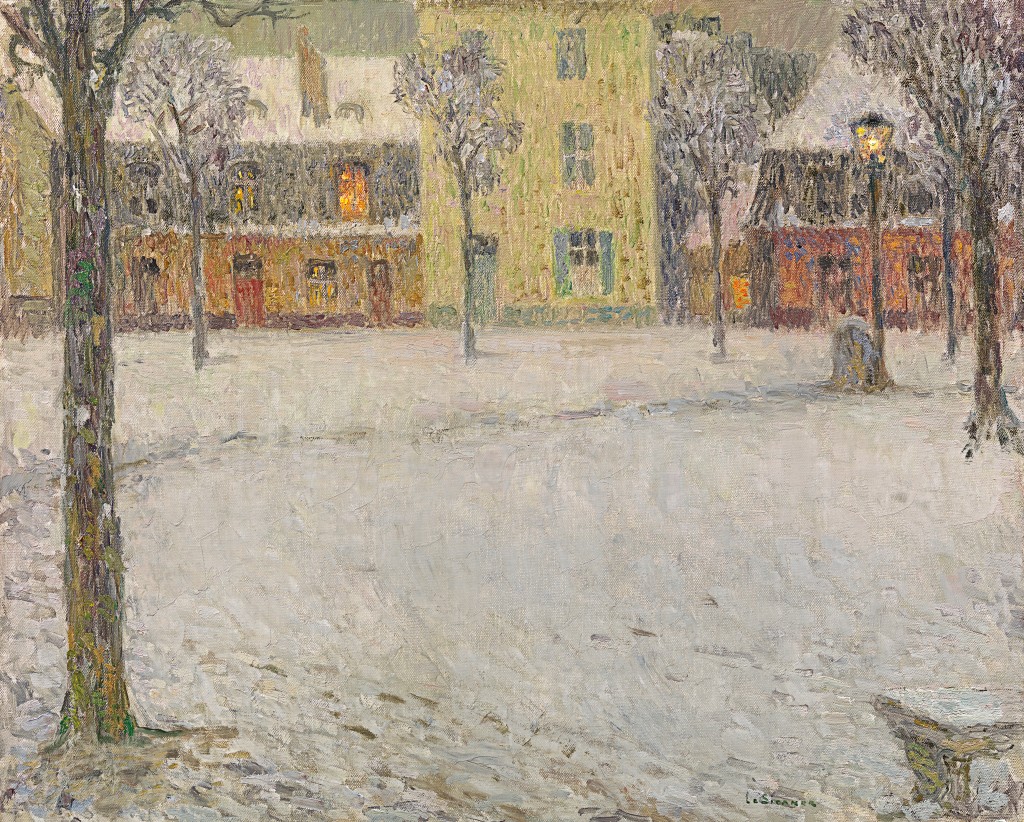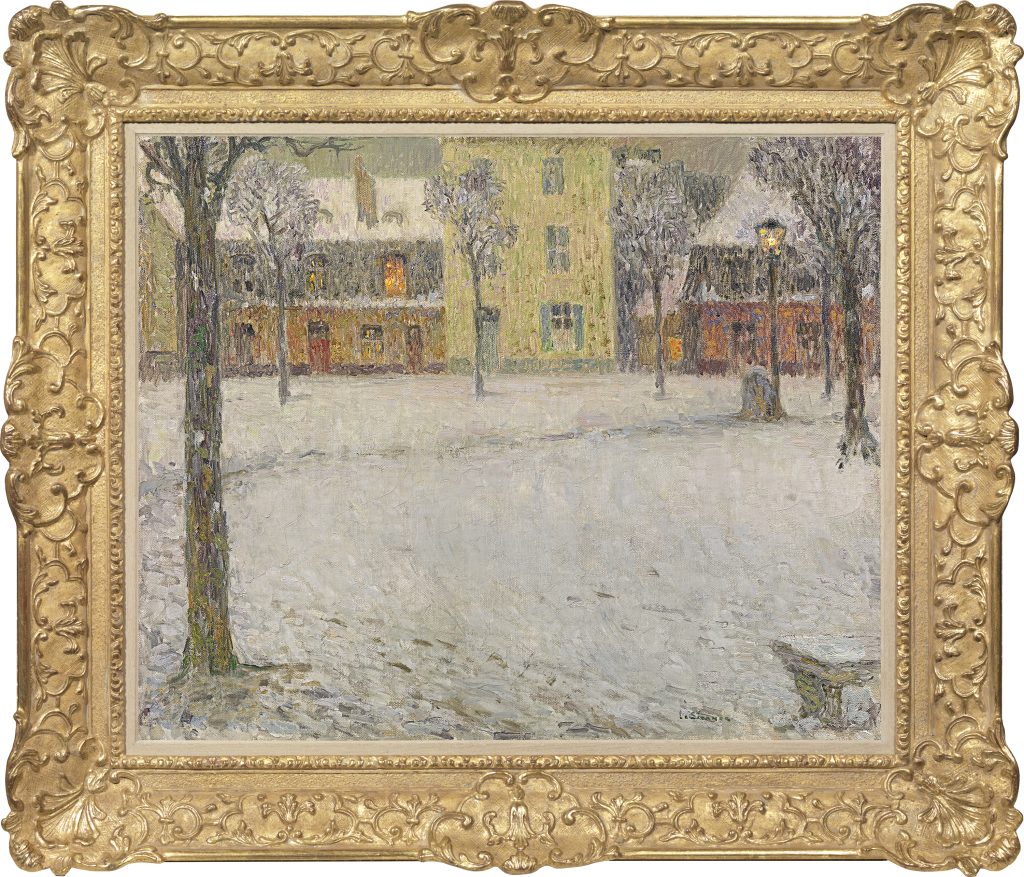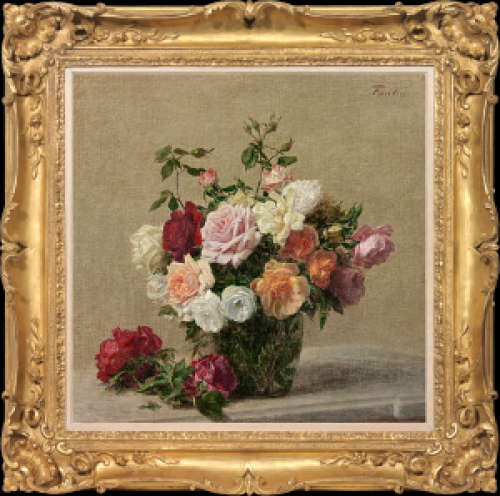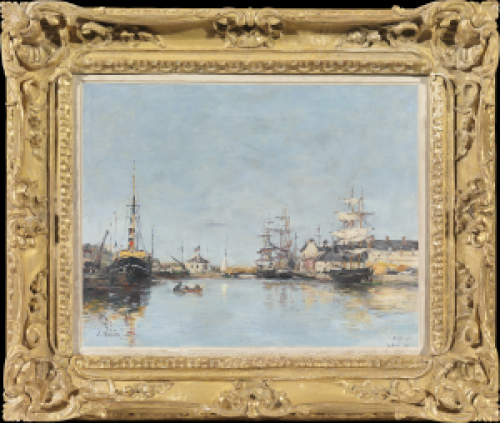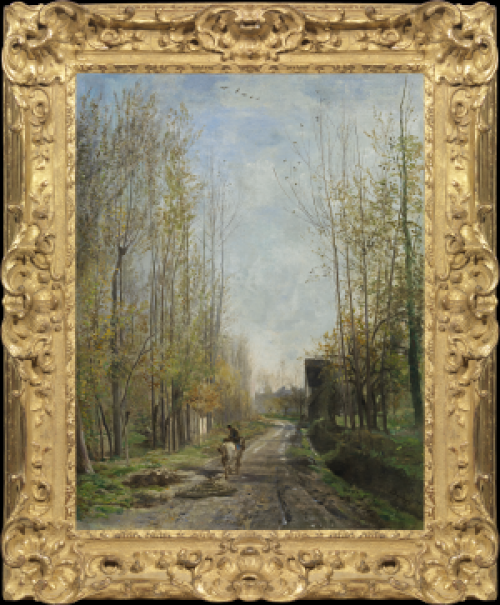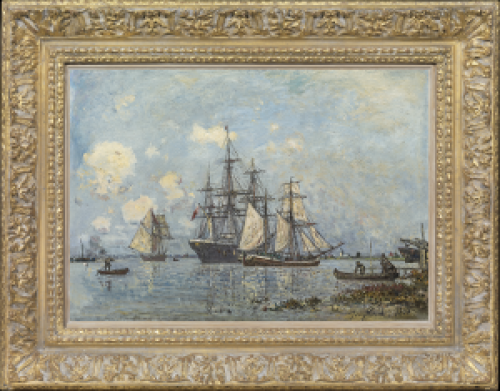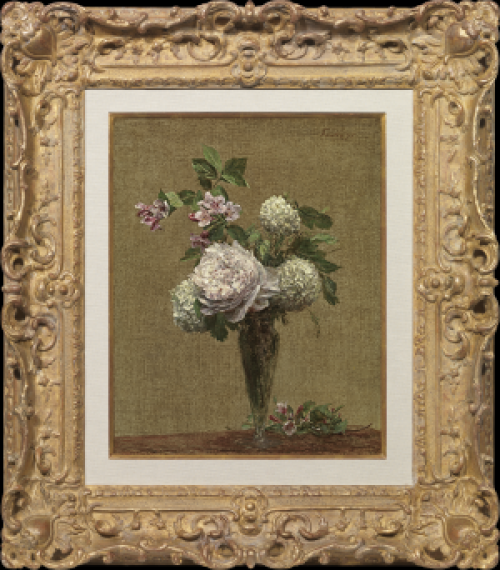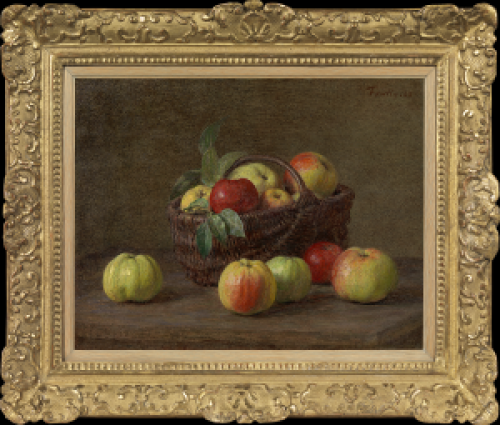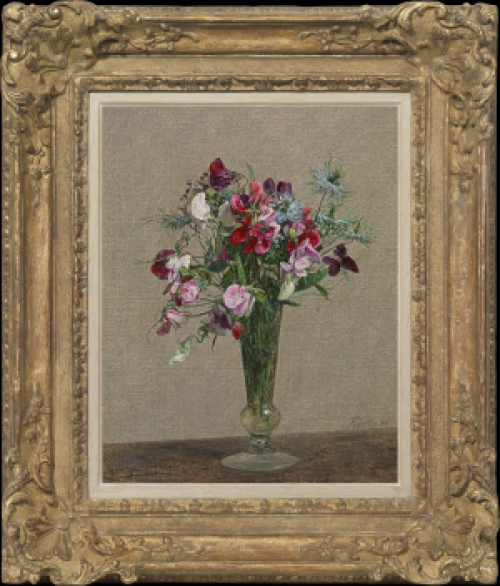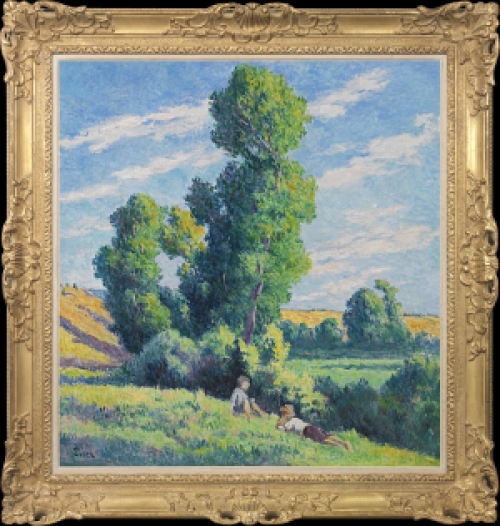HENRI LE SIDANER
Port-Louis 1862 - 1939 Versailles
Ref: CB 158
Place Saint-Louis, Versailles, neige
Signed lower right: Le Sidaner
Oil on canvas: 23 5/8 x 28 ¾ in / 60 x 73 cm
Frame size:
Painted in Versailles in 1925
Provenance:
Galerie Georges Petit, Paris
Galerie Serret-Fauveau, Paris
Fernand Graindorge (1903-1985), Liège;
acquired from the above in April 1960 by a corporate collection, Belgium
Literature:
Camille Mauclair, Henri Le Sidaner, Paris 1928, p.152, illus.
Yann Farinaux-Le Sidaner, Le Sidaner, l’Oeuvre Peint et Gravé, Milan 1989, p.212, no.560, illus.
Henri Le Sidaner is well known for the views that he made of his house in Gerberoy, near Beauvais, and the wonderful garden that he developed there. He first rented the house in 1901, bought it in 1904 and made extensive alterations from 1910. However, Gerberoy was freezing cold in winter and in fact Le Sidaner spent only one winter there. It became a house for the family to enjoy Easter and the summer holidays. The rest of the year, the Le Sidaners lived in a comfortable house in Versailles, where the children went to school.
Le Sidaner found as much inspiration for his art in Versailles as in Gerberoy. The town was created by Louis XIV and was the seat of the monarchy and government from 1682 until the Revolution in 1789. Its calm and gracious street plan, based on grids, diagonals and wide boulevards, appealed to Le Sidaner’s sense of order and the underlying geometry that he always sought in his compositions.
The Place Saint-Louis depicted in this painting lies in the town’s quarter to the south-east of the Château de Versailles, developed from 1722 after Louis XV came of age and returned to the palace complex from his years in Paris. The serene geometry of the old houses, which are seen face on, is softened by the snow falling in the dusk. Le Sidaner is, as ever, superb in his control of tones, blurring the outlines of the houses by a myriad of quick, vertical strokes which describe both the declining light and the snowflakes noiselessly descending. He pushes the houses of the square to the top of the canvas, leaving a large area of snowy square created from touches of white, cream, pale grey, beige and the faintest hint of pink. A slender tree frames the scene at the left, while, on the right, a bench abruptly cut off by the edge of the canvas introduces a note of the quirky informality beloved of the Japanese printmakers so revered by Le Sidaner and his Impressionist contemporaries. As so often with Le Sidaner, the view is quite devoid of any human presence. Domestic wellbeing and harmony is instead suggested by the orange glow of well-lit rooms in the houses fringing the square, contrasting with the wavering lemon light of a solitary street lamp.
Note on the provenance
This painting was formerly in the collection of the Liège industrial magnate Fernand Graindorge (1903-1985). Born in the Ukraine, where his father managed coal mines, Graindorge returned to Belgium in 1913 and built up a business empire which embraced metal works, construction and transport. He was a passionate art collector all his life, owning works by Monet and Matisse as well as masters of the Modern school including Picasso, Arp, Léger, Kandinsky, Miró, Klee and Pollock. Graindorge was a leading member of the Walloon (French-speaking) community in Belgium and a major philanthropist of Walloon cultural life and his home city of Liège. In 1981 he donated seventy works from his collection to the French Community of Belgium.
HENRI LE SIDANER
Port-Louis 1862 - 1939 Versailles
Henri Le Sidaner was born in Port-Louis, Mauritius in 1862, the son of a shipbroker of Breton descent. At the age of ten his family moved to Dunkirk and in 1880, after the death of his father, to Paris. Le Sidaner entered the studio of Alexandre Cabanel at the Ecole des Beaux-Arts in 1884, but was more inspired by Manet than by his master’s dry academicism.
In 1889 he moved to Etaples, where he met the painters Eugène Chigot and Henri Duhem, who were to remain lifelong friends. Le Sidaner made plein-air paintings of Breton peasants and fishermen in a subdued palette.
In 1892 a grant allowed him to paint in Florence, Venice and Katwijk in Holland. In 1894 he settled in Paris, transferring his allegiance from the Salon to the more avant-garde Société Nationale des Beaux-Arts. In this period Le Sidaner produced paintings such as the 1896 Morning (Musée de Dunkerque) and Twilight (private collection), which combine elements of Impressionist technique with Symbolist themes. That year he signed a contract with the Mancini Gallery.
In 1898 Le Sidaner turned decisively towards the highly individual style, building on the innovations of Impressionism, that would characterise his work for the rest of his life. In 1898 he went to Bruges with his lover Camille; their son Louis was born in Paris in October, although the couple was based in Bruges for another year. In 1899 they returned to Paris and Le Sidaner became one of the group of artists represented by Galeries Georges Petit, which would give him financial stability and remain his dealer until 1930.
Le Sidaner, keen to buy a country house around which he could develop a garden, was advised by Rodin to visit the terrain near Beauvais. In 1901 he rented a cottage in the picturesque town of Gerberoy (Seine et Oise). He bought it in 1904 and in 1910 greatly enlarged the house, creating a paradisiacal garden which provided the inspiration for many of his later paintings. Le Sidaner developed a poetic style of Post-Impressionism which explores the qualities of light and objects through harmonies and counterpoint of subtle tones. After 1900 he rarely included figures in his paintings, implying human presence through his interest in depicting a community of ancient houses, or a table set for tea. Le Sidaner’s works, with their evocation of mood and emotional engagement with landscape, have affinities with the music of ‘Impressionist’ composers such as Claude Debussy.
Le Sidaner travelled in search of new motifs, wintering in Venice or London to escape the freezing cold of Gerberoy. From 1914 his family was based at a comfortable house in Versailles and summered in Gerberoy. From around 1920 his paintings employ a lighter palette and sparer, more dreamlike compositions. He was awarded the Légion d’Honneur in 1913 and the First Prize at the 1925 Pittsburgh International. Henri Le Sidaner died in Paris in 1939.


